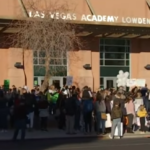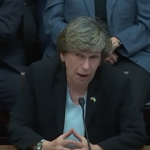The Truth about the Magna Carta
The details surrounding the Magna Carta are often overlooked, but it remains a revered document. Author David Starkey explained the importance of the Magna Carta while promoting his latest book, Magna Carta: The Medieval Roots of Modern Politics, at the libertarian think tank Cato Institute. Starkey is also a BBC Radio and TV presenter.
For openers, there is the reason why the Magna Carta was negotiated at Runnymede Fields. The English barons and King John selected that spot “because it was a bog,” said Starkey, “The place is moist, wet ground. It is a water meadow, so it is a place where you can’t fight. It is jaw, jaw not war, war.”
Starkey noted that the Magna Carta was written “because the [English] barons seized London, or rather, London surrendered to the barons.” London was where the royal treasury was located, which meant, in Starkey’s words, “John is finished” as the king of England.
Starkey averred that the Magna Carta “leads directly to the Bill of Rights” in the U.S. Constitution and is a demonstration of “the reworking and re-conceptualizing” of important principles in the Anglosphere. For example, it is in the Magna Carta where the concept of “you will have no sovereign” first appears. He saw many “similarities [between] modern politics and old monarchical politics” in his study of the Magna Carta.
The Magna Carta was first written because of King John, who had ascended to the English throne in 1199, and was “the most powerful ruler in Europe” for a brief time. However, Starkey pointed out, John lost “two empires in quick succession” by losing land in France and failing to consolidate the British Isles under his crown.
These circumstances led to “London open[ing] its gates to the rebel barons,” and when “John loses what’s left of his treasury…his capital…he’s finished.” Starkey continued, “[In] less than two weeks, John is negotiating at Runnymede with the barons” while “his negotiator is his leading ecclesiastical opponent” in the Archbishop of Canterbury. In the end, John was “forced to come to an agreement” even though the “Magna Carta is an utterly devastating document” for the monarchy.
The original drafts of the 1215 Magna Carta are still in possession today, Starkey said, and “it looks like a modern negotiating document.” He pointed out that, “800 years before Microsoft, every line of the barons begins with a bullet point.” The proposals put forward by the barons were “genuinely republican” by creating and appointing committees for concerns such as public safety, while the document also “replace[d] the oath of allegiance [with] the sovereign to an oath to the charter.” Also, adding insult to injury, the barons created a “form of indenture…an ultimatum, a deadline” in order to permit John to re-enter the city.
However, the Magna Carta did not lead to immediate peace in England. “First of all, it leads to direct civil war. The document is so contentious that John would have no support” in England and resorted to war. “Secondly, the fact that it has…no validity in law” because the document it was not approved by the Church nor the Pope in Rome. “A savage civil war” ensued, where the French intervened at the barons’ request and turned the tide of the war.
While the “grandiose clauses” of the Magna Carta mean little, the process and history that created it matters most, said Starkey.





